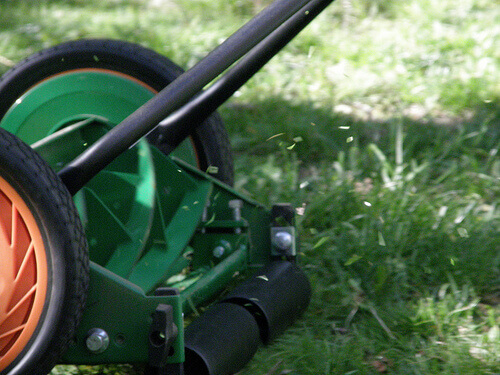Get Your Mower Ready for Spring
As we continue to experience temperature swings and unusual weather patterns, it’s easy to forget that the actual season of spring is almost here. Some recent days have been warm enough to make us, and grass, think it’s already arrived. That’s a sign that it’s time for the annual spring ritual that will prepare your lawn mower to get back into action.
Spring Mower Maintenance Checklist:

Spark plug: It’s critical to disconnect the spark plug lead before doing anything near the blades. Use a plug socket to remove the plug and clean it with a wire brush and spray plug cleaner. If you see corrosion or rust, replace the plug. When you’ve worked your way through this list, reconnect the wire.
Cleaning: Before putting the mower away for the winter season, you should have removed any matted grass and leaves from the underside of the mower. Before you next use your mower, double check that area. Rather than using a tool that might scratch the mower and invite rust, it’s better to just deploy a gloved hand.
Belts: It’s important to check belts regularly for any signs of loosening, rot, or cracks.
Wheels and tires: Check the bushings for wear and the tires for tread depth. Check the tire pressure if you use a riding mower.
Blades: You can sharpen them yourself with a metal file or take them to a hardware store or mower repair shop. If you can see damage, they should be replaced.
Cutting height: Since it’s appropriate to leave most grasses a little longer in later fall and early winter, you may have increased the height of your blades toward the end of last season. For spring, reset them to about one inch off the ground. Cutting any lower can damage your lawn.
Air filter: A year of vigorous service is enough to ask of any air filter. Past that point, your engine will run less efficiently and burn fuel unnecessarily. Doing this yourself is even easier than changing the oil. Most mowers use disposable paper filters, but some feature a sponge model that can be cleaned (and allowed to air dry) rather than replaced.
Gasoline: Again, you probably took care of this item before you stored your mower for the winter by running the tank dry or siphoning out excess gas. It may be tempting to try to rejuvenate old fuel by diluting it with new, but you may find yourself with a full tank and a clogged carburetor. It’s much better to empty the tank completely before your first spring full-up.
Oil change: Your engine will run better with an annual oil change, and your mower will stay in service longer. This service will certainly be included if you take your mower to a shop for service, but it’s easy to do it yourself if you don’t mind disposing of the used oil. A local auto parts store, your trash company, or the nearest landfill can tell you what your options are.
Tune-up kits are available to help make this process more efficient. If you prefer to have a mower repair shop do the dirty work, make arrangements soon or risk a long wait. Whether you work through our checklist yourself or bring in the pros, you’ll find that investing a little time now can save you a lot of trouble later.




